19 Dec 2024
How to Develop a Social Media App: From Concept to Monetization Strategies
Matthew Connor
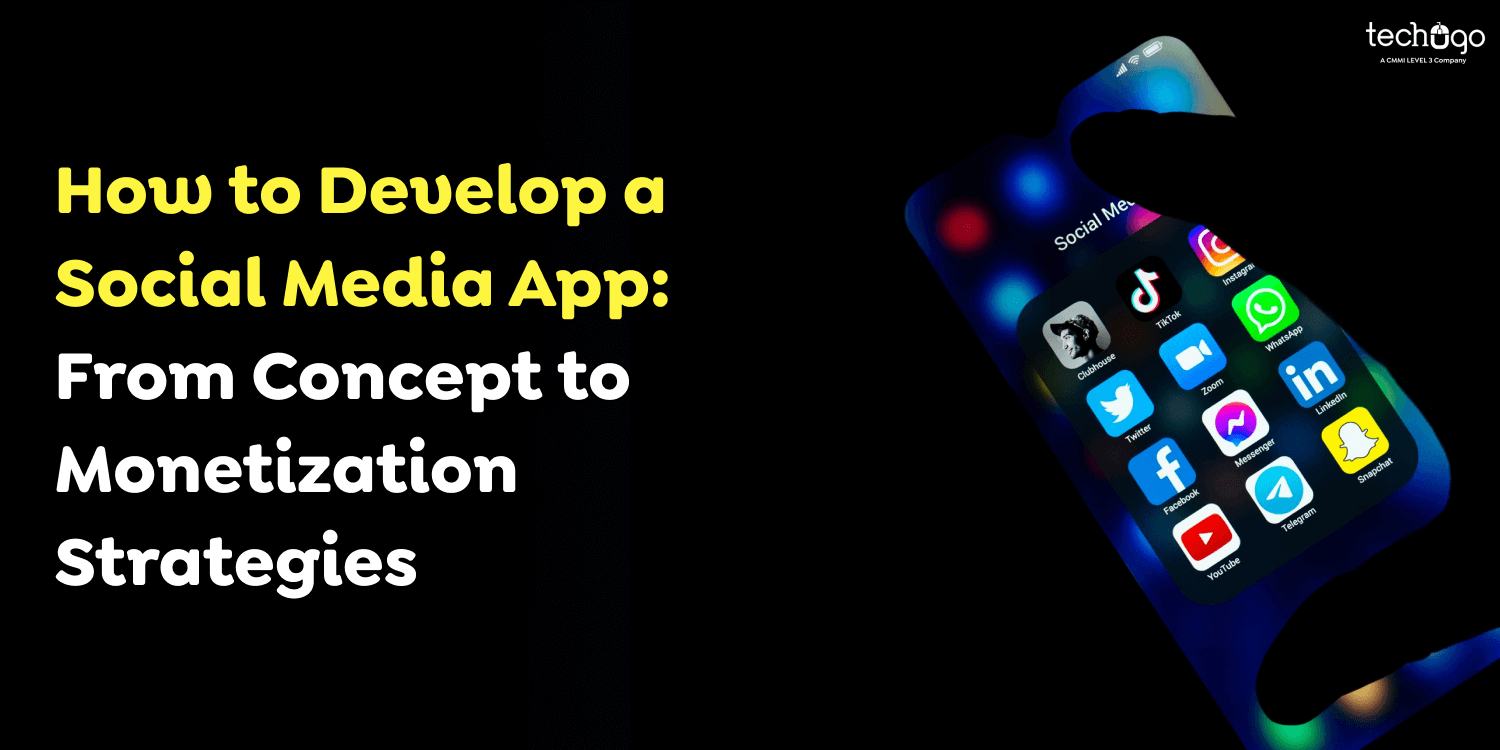
In today’s digital era, social media has become a core part of our daily lives, empowering people worldwide to connect, interact, and share experiences. With the growing demand for creative social networking platforms, businesses and marketers are increasingly interested in the potential of building their own social media app. As a result, understanding the complexities and costs of developing a social media app is crucial.
One of the major questions that emerges in the early phases of app development is: What will it cost? It is essential to understand the factors that constitute the total cost of constructing a social media application. The following blog outlines components that affect the cost of social media app development to help you in the developmental step for improved decision-making. To ensure a successful and cost-effective project, partnering with a reliable social media app development company can deliver the expertise required for every stage of the process.
Let’s explore the world of social media apps and understand how these dynamic platforms facilitate user interaction, content sharing, and create communities that drive engagement.
Understanding Social Media Apps
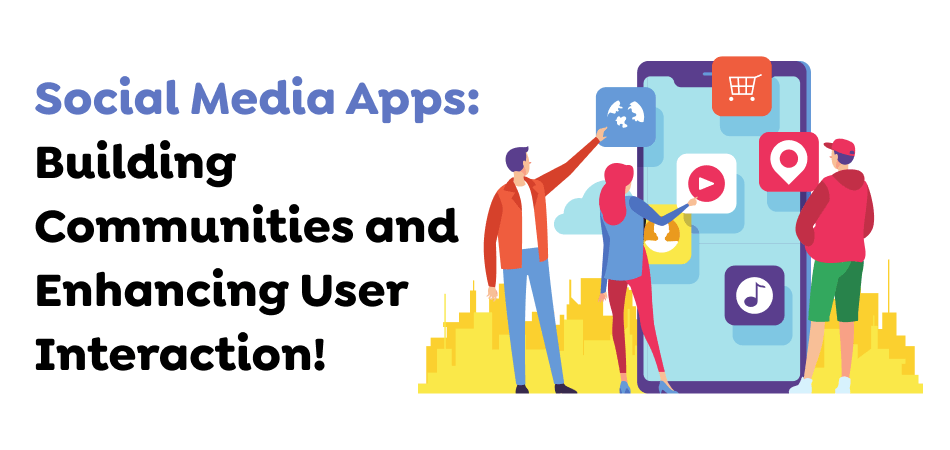
Social media apps are customized programs intended for people to communicate by discussing various topics and sharing content with others. These apps let users create personal pages, find people, and post various forms of media. With the buttons like, share, comment, and like, these apps develop an active platform to interact with friends, families, etc.
Let’s move on to the points that will illustrate the main factors affecting the cost to develop an app and what factors determine the budget and the time required.
Also Read : How to Build a Fitness App: A Step-by-Step Guide
Estimating the Cost of Developing a Social Media App
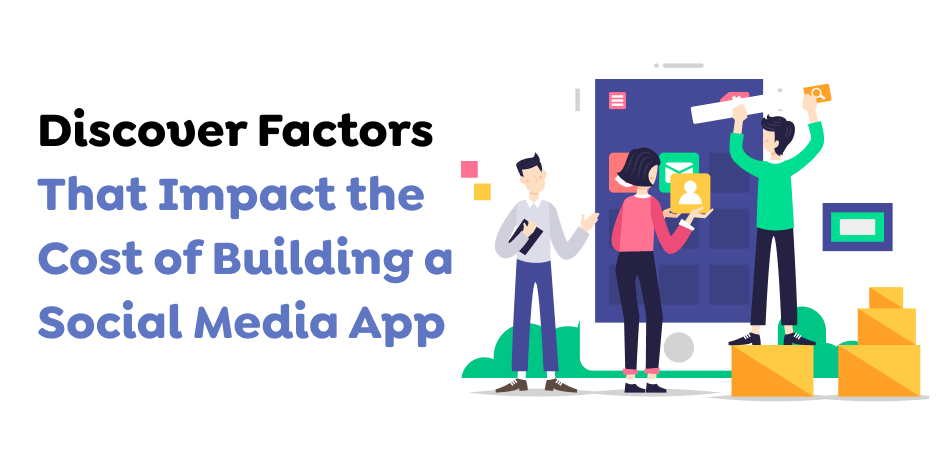
The cost of developing a social media app depends on the complexity of the app, the number of features. It includes whether you’d like to have an iOS or Android, design specifications, and the social media app development company.
Basic social media with interface options like account creation, picture sharing, and communication means will be cheaper than an intricate application with integrated options like location tracking, instant notifications, video, or artificial intelligence.
-
Development Process:
This phase involves front and back-end development, database configuration, and API implementation. The degree of complexity has a huge impact on the cost. Generally, the more complicated the application, the more resources and time will be needed.
-
User Interface and User Experience Design:
An attractive and easy-to-use design is essential for the success of any social media app. A well-crafted UI and UX are critical to engaging and retaining users. Design expenses will depend on the level of detail required to create a visually appealing and intuitive experience.
-
Testing and Quality Assurance (QA):
Testing ensures that the app runs properly on various devices and operating systems. Quality assurance helps identify areas that need corrections to remove bugs and enhance the app’s smooth functionality. The cost of the QA process will vary depending on the complexity of the app and the tools applied to its testing.
-
Ongoing Maintenance and Updates:
After its launch, an app requires more time and resources to maintain and support, conforming to users’ expectations. Maintaining schedules is significant in the long run because users are surely going to turn away from an app that is outdated or monotonous.
Now, let’s discover some effective strategies to minimize the cost of developing a social media app.
Also Read : How Much Does It Cost to Develop an App Like Block Blast Puzzle?
Tips to Minimize the Cost of Developing a Social Media App
Building a social media app can be costly, but there are strategies to help you reduce expenses without sacrificing quality. Here are seven effective ways to keep costs manageable while creating a robust app.
-
Focus on Core Features and Start with an MVP (Minimum Viable Product):
Begin by clearly identifying the app’s main purpose and who it’s meant to serve. Determine the essential features that your target audience will find most valuable. Starting with a Minimum Viable Product (MVP) lets you test the concept with core features, gather feedback, and adjust based on real user insights. Launching an MVP first allows you to refine the app over time. Moreover, it helps in avoiding the costs of developing extra features before they’re validated.
-
Utilize Open-Source Tools and Cross-Platform Frameworks:
Use third-party tools such as React Native or Flutter to create applications that work on both mobile and web, based on a single codebase. This approach helps in fast and less expensive development by avoiding the need to develop application versions for both iOS and Android platforms. As for software frameworks, using open-source libraries and APIs can lower the development time of standard features. It includes logins, push notifications, and social sharing integrations while reducing costs.
-
Outsource Development Selectively:
Delegating segments of the development process can be relatively less expensive if you select teams in countries with low rates. Rather than outsourcing the entire project, break it into components and hire specialists only for specific tasks. This selective outsourcing approach lets you maintain control over critical elements > moreover it benefits from external expertise where it’s most needed, which can help keep overall costs down.
-
Focus on Simple, Effective UI and UX Design:
An attractive and user-friendly interface is key, but complex animations and intricate designs can increase costs. Instead, aim for clean and straightforward designs that prioritize usability. Streamlined layouts and smooth navigation create a positive user experience without driving up costs. Involve users in testing early on to catch any usability issues, helping you avoid expensive adjustments later in the process.
-
Choose Scalable Cloud Infrastructure:
With cloud services such as AWS or GCP, your app implements a scalable architecture, saving money on physical servers. Opting for scalable cloud solutions means you only pay for the resources you need, reducing unnecessary expenses. Developing a simple system and adding features as the number of users rises will help avoid overinvestment during the initial stage.
-
Embrace Automation in Testing and Deployment:
Automating testing and deployment can save time and reduce errors. Automated testing tools quickly identify issues, which helps prevent costly delays due to last-minute fixes. Automated testing tools can easily flag problems. Moreover, no time will be wasted fixing an issue when its impact is at the last minute. Automation of deployment makes the release of updates easier. It also improves the smooth operation of an app in case of any update and minimizes errors that may be caused. In turn, this efficient approach enables you to put changes into practice swiftly and to a highly affordable degree.
-
Explore Diverse Monetization Models:
To get more users, revenue sources other than ads should be explored to maintain the base of users. Pay-as-you-go options include purchasing more features in the app or paying per article or month subscription for more content or a free sorted option with a paid upgrade. Other sources that can contribute to the company’s revenue are sponsoring brands, without purely advertisers. It is important to establish how to generate the necessary funds for the app’s functionality. A better approach would be to find ways to make the app profitable and offer the best experience to users.
By following these strategies, you can develop a high-quality social media app with the help of a social media app development company while effectively managing costs and ensuring a positive user experience.
Also Read : How To Develop A Successful Wealth Management App
Eight Proven Strategies to Monetize a Social Media App
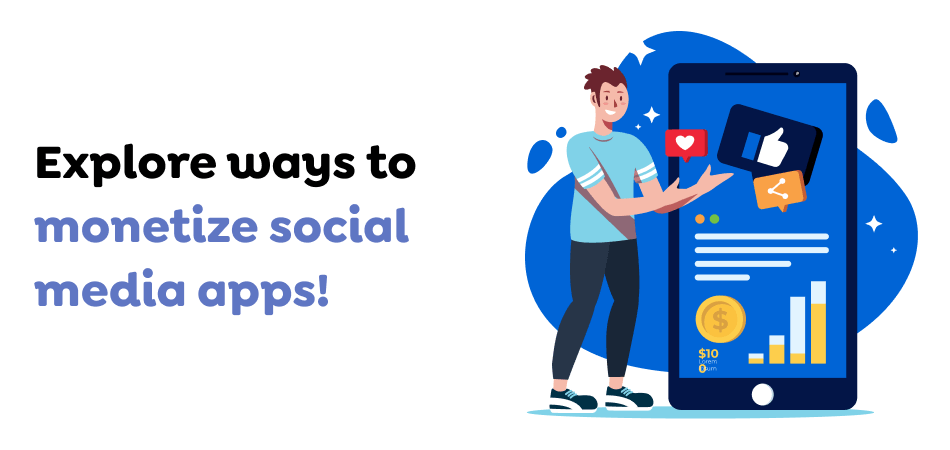
Turning a social media app into a revenue-generating asset requires well-thought-out strategies. Here are eight effective approaches to help maximize the earning potential of your app:
-
Leverage In-App Advertising:
A popular monetization method, in-app advertising involves placing ads within the app’s interface. Moreover, it can be displayed as banners, interstitials, or native content. Earnings are normally based on an impression or click, and the price is generally represented by CPM or CPC accordingly. When targeted according to interests and age, gender, and other characteristics, ads will attract attention and, therefore, be more valuable. Adaptation of a real-time bidding (RTB) system can also enable the advertiser to bid on placements, increasing the ad revenue. To discover more about how to incorporate ads through a novel approach, you might need the services of a professional social media app development company in Toronto.
-
Offer Subscription Plans for Premium Features:
Pay-per-use models are effective for users as much as they are willing to pay for other characteristics or content material. Some websites may allow those signing up for a free account basic privileges, while paid members’ privileges may include no advertising, analytics, or extra options, among others. Giving a trial period could encourage people with basic use to try the pro version before they pay for it.
-
Include In-App Purchases for Extra Functionality:
In-app purchases allow users to buy virtual items, exclusive content, or additional functionalities directly within the app. This model is especially effective in social gaming apps where users may be motivated to purchase digital currency, power-ups, or cosmetic items. Periodically replenishing the catalog of items bought within the application can let users stay interested and make purchases several times. Moreover, it is effective to cooperate with a social media app development company to ensure safe in-app purchase solutions.
-
Partner with Brands for Sponsored Content and Influencer Collaboration:
Sponsored content and influencer marketing are important sources of value because people will pay for products and services from brands they regularly engage with. Sellers and service providers can bring products or services within the app through paid posts, integration, or events. Maintaining relevance of probably sponsored content.
-
Monetize User Data Responsibly:
Anonymized user data, such as behavior patterns and preferences, can be valuable to advertisers and research organizations. This is a potential source of revenue. Therefore, care must be taken because sharing this data outside the organization violates legal policies such as GDPR and CCPA. Asking for consent from the users and giving them the option to change their privacy settings makes users understand and be assured of our compliance.
-
Implement Affiliate Marketing Campaigns:
Affiliate marketing involves promoting products in the app through an agreement where the affiliate earns a commission for each sale. This can be done through links placed in the content, which contain information about the user’s post or event. Selecting affiliate products is key to the engagement process because you must select products that appeal to your target audience.
-
Provide Access to Premium Content or Features:
Providing users with an option to pay for additional content or exclusive features is the way to receive extra money. For instance, a photo-sharing application could have special filters/ effects for its users, or a messaging app could have features such as virtual gifts or promotional emojis. A continuous update guarantees that the new and improved products are attractive to users, who will buy the products again.
-
Offer White-Label Solutions and Licensing Opportunities:
Most businesses and organizations ranging from small-scale to large companies continuously seek custom social media solutions for their specific industry. Therefore, licensing your app’s platform or most significant features to such businesses could be an incredible way of generating income. White labeling enables organizations to customize the app and make it fit their needs and aesthetics.
When implemented thoughtfully, these monetization strategies can help you build a sustainable revenue model for your social media app.
Also Read : The Ultimate Guide to Developing an App Like Duolingo
Key Features of Social Media Apps
Social media apps built by a social media app development company are designed to foster user interaction and content sharing. To create a successful social media app, here are some essential features that enhance user engagement and functionality:
-
User Profiles and Personalization
- Users should create profiles with profile pictures, bios, and cover images, among other things.
- Due to personalization, the service allows the user to choose individual themes, privacy settings, and content settings.
-
Content Creation and Sharing
- Allows users to post, create, and share a variety of content such as text, photos, videos, and links.
- Edit options, tagging, and captioning opportunities enable users to continue the customization of their posts.
-
Messaging and Chat Features
- Real-time messaging lets users connect privately or within groups.
- Features like multimedia sharing, voice notes, and read receipts make communication more interactive.
-
News Feed or Activity Feed
- A personalized feed allows users to see updates from connections or followed accounts.
- Algorithms based on user preferences, engagement history, and trending topics keep the feed relevant.
-
Notifications and Alerts
- Push notifications inform users of new messages, comments, likes, or follows.
- Customizable notification settings let users control what types of alerts they receive.
-
Likes, Comments, and Reactions
- Interaction tools like likes, comments, and reactions allow users to engage with posts.
- Reaction options (e.g., like, love, wow) add variety to user feedback.
-
Search and Discovery
- Search functionalities enable users to find other users, content, and hashtags.
- Discovery features, such as trending topics or “Explore” pages, help users engage with new content.
-
Friends, Followers, and Connections
- Features like follow, friend requests, and group joining foster a sense of community.
- Options to accept, decline, or remove connections allow users to control their networks.
-
Privacy and Security Settings
- Robust privacy options let users control who can see their profiles and posts.
- Security features like two-factor authentication and reporting mechanisms for inappropriate content ensure a safe environment.
-
Live Streaming and Stories
- Live video streaming allows users to share events in real-time.
- Temporary stories that disappear after 24 hours add an ephemeral quality to content sharing.
-
Push Notifications and Real-Time Updates
- Notifications about friend activities, messages, and app updates keep users engaged.
- Real-time updates ensure that users are instantly aware of interactions or breaking content.
-
Location-Based Services
- Geotagging posts and adding nearby places enhance local connections.
- Location-based suggestions or check-ins help users explore local content and communities.
Now, let’s explore how Techugo, a mobile app development company in Toronto, can support your social media app development. With expertise and resources, Techugo can help turn your vision into a dynamic, user-friendly platform.
Also Read : How Much Will It Cost to Create an AI-Based Shopping App Like Target?
How Techugo Can Support Your Social Media App Development
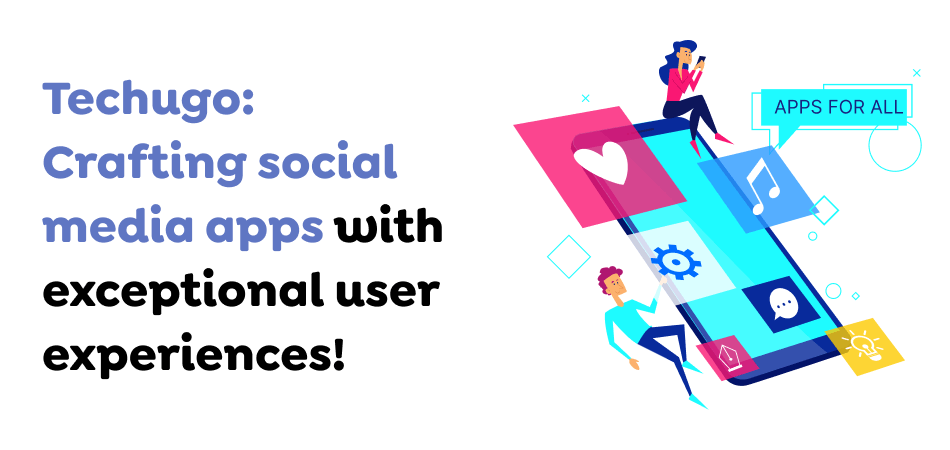
At Techugo, we provide social media app development services to help you build a dynamic and engaging platform. Our skilled developers will work with you through each phase, from initial concept and design to development and launch. Moreover, ensuring a seamless process.
Our social media app development company recognizes the importance of effective monetization for the success of any social media app. Our experienced team can guide you in implementing a range of revenue-generating models. It includes advertisements, subscription plans, and premium features, to suit your business goals.
This also applies to our capacity to design solutions for agencies and enterprises interested in tailored social networking platforms. By partnering with Techugo, a social media app development company, you can provide a robust, customizable social media app to your clients, supported by our reliable technical assistance and ongoing maintenance services.
Conclusion:
Creating a social media app requires a thoughtful approach to design and functionality to satisfy user expectations and maintain engagement. Concentrating on essential features like user profiles, content sharing, and interactive tools can develop an engaging platform that encourages connections. As the app scales, advanced features and monetization strategies further improve user value and help financially sustain the app.
Collaborating with a social media app development company guarantees that your project is addressed by experts who understand the nuances of building secure, scalable, and engaging apps. A reliable social media app development company can guide you through each stage of development. Additionally, it allows you to focus on growth and user satisfaction.
Get in touch with us today to bring your social media app ideas to life with an expert team dedicated to crafting engaging and innovative solutions!
Get In touch
We are excited to here from you and let’s start something special Together. Call Us for any inquiry.
Write us
sales@techugo.caJust a call away
About you




